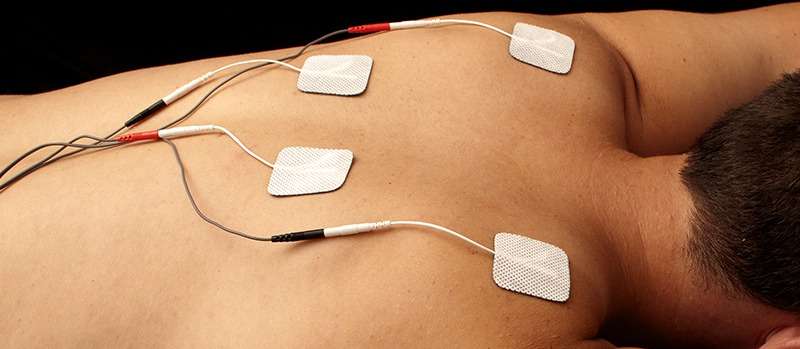Understanding Calmare and Scrambler Therapy
Calmare Therapy, also known as Scrambler Therapy, is a non-invasive treatment designed to manage and alleviate chronic pain. Developed in Italy by Dr. Giuseppe Marineo, this innovative therapy uses a sophisticated electrical stimulation technique to address pain signals in the nervous system.

How Does Calmare Therapy Work?
Calmare Therapy operates on the principle of “scrambling” or altering pain signals that are transmitted to the brain. This is achieved through a device that sends specific, low-frequency electrical impulses to the affected area. These impulses interact with the pain pathways in the nervous system, effectively “scrambling” the pain signals and reducing their intensity.
The therapy involves placing electrodes on the skin near the site of pain. The device then delivers a series of electrical pulses that mimic the body’s natural pain relief mechanisms. By disrupting the pain signals before they reach the brain, Calmare Therapy can help to diminish the perception of pain.
Applications of Calmare Therapy
Calmare Therapy is used for a variety of chronic pain conditions, including:
- Neuropathic Pain: Pain resulting from nerve damage or dysfunction.
- Fibromyalgia: A condition characterized by widespread muscle pain and fatigue.
- Complex Regional Pain Syndrome (CRPS): A chronic pain condition affecting a limb after an injury.
- Post-Surgical Pain: Persistent pain following surgical procedures.
- Back Pain: Chronic pain affecting the lower or upper back.
Benefits of Calmare Therapy

Calmare Therapy offers several potential benefits for individuals suffering from chronic pain:
- Non-Invasive: Unlike some pain management treatments, Calmare Therapy does not require surgery or injections, making it a safer option for many patients.
- No Medication Side Effects: The therapy is drug-free, reducing the risk of side effects commonly associated with pain medications.
- Personalized Treatment: Each session is tailored to the patient’s specific pain patterns and needs, providing a customized approach to pain relief.
- Improved Quality of Life: By effectively managing pain, Calmare Therapy can help improve overall quality of life, allowing individuals to engage in daily activities and improve their well-being.
- Potential for Long-Term Relief: Many patients experience significant and lasting relief from their symptoms, even after completing the treatment sessions.

What to Expect During Calmare Therapy
During a Calmare Therapy session, patients typically sit comfortably while the therapist applies the electrodes to the skin. The treatment is generally well-tolerated, and patients may feel a gentle tingling sensation as the electrical impulses are delivered. Sessions usually last about 30 minutes, and the number of sessions required can vary based on the individual’s condition and response to the therapy.
Calmare Therapy FAQs
What conditions can Calmare Therapy treat?
Calmare Therapy is used to treat various chronic pain conditions, including neuropathic pain, fibromyalgia, complex regional pain syndrome (CRPS), post-surgical pain, and back pain. It targets pain by altering the signals sent to the brain.
How is Calmare Therapy administered?
Calmare Therapy involves placing electrodes on the skin near the area of pain. The device then delivers low-frequency electrical impulses that “scramble” the pain signals, reducing the perception of pain. Each session typically lasts around 30 minutes.
Are there any side effects associated with Calmare Therapy?
Calmare Therapy is generally well-tolerated with minimal side effects. Since it is a non-invasive, drug-free treatment, it avoids many of the risks and side effects associated with medication-based pain relief methods.
How many sessions of Calmare Therapy are needed to see results?
The number of sessions required can vary depending on the individual’s condition and response to the therapy. Some patients may experience relief after a few sessions, while others might need a more extended treatment period. Your healthcare provider can offer a tailored plan based on your specific needs.
